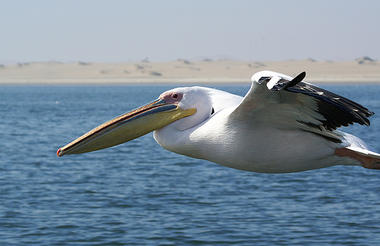You will be collected from your accommodation within the Windhoek city limits or the airport by 07.15 am for a short pre-departure meeting. Heading north, our first stop in the small town of Okahandja, where we will find Namibia’s largest wood carving market. Onwards we travel to our overnight destination at Mt. Etjo campsite, which is located adjacent to the private Okonjati Game Reserve.
After making camp and preparing lunch, we will drive three kilometres to the lodge, where there will be time for a dip in the pool.
Time for our first game drive to explore the 36,000 hectares. The open landscape, great for photography. Around sunset we will stop for refreshments before returning to the lodge and then heading back to our campsite for dinner. After, we head back to the lodge to watch some of the resident lions enjoy their evening meal.
Driving time: ~2-3 hours



Morning
Okahandja Craft Market
Afternoon
Departing after breakfast we head back to the main road to continue our journey north, en-route to Etosha National Park. We make a short stop for essential supplies in the small town of Otjwarongo before continuing on to Etosha’s main camp at Okaukuejo. We are introduced to the park with a short game drive between the main entrance gate and Okaukuejo Camp, with a good chance to spot big game right from the very start.
After setting up our campsite we will head out into Etosha in search of big game. All visitors must be back in camp at sunset, but the ‘game show’ doesn’t stop when the sun goes down. Only a short walk from our campsite, Okaukuejo is justly famous for its very productive, flood-lit waterhole.
Driving time: ~3 hours



Afternoon
We have the whole day to explore Etosha. The park gates open at sunrise and after a quick cup of coffee and a snack we will be on our way as the sun breaches the horizon. Early morning is a productive time for game viewing and early morning is a good time to catch big cats returning from the hunt. Along the way we will make a stop at a designated picnic area for a quick breakfast before continuing our game drive en-route to the camp at Halali. We will have lunch at Halali, and there will also be time for a swim in the pool.
There is also time to visit the Halali camp waterhole before we head back out into the park for our afternoon game drive. On our way back to Okaukuejo we will stop to have a closer look at the Etosha Pan. Keeping a sharp look out for game as we wind our way back to Okaukuejo. We aim to arrive back at our camp just before sunset and just in time for the best hour of the day at the Okaukuejo waterhole.



Full day exploration of Etosha National Park
Time to leave Etosha and concentrate on some of Namibia’s other highlights. After an early breakfast and game drive we leave the park. Our first stop is a cultural visit to the Otjikandero Himba Village. The next leg of our journey today is truly spectacular, we turn to the west and head towards the mighty Etendeka Mountains and the Grootberg Pass.
Palmwag is set out abreast of the Uniab River and under waving makalani palm trees, which often provide a refuge for Namibia’s unique desert adapted elephants. Sometimes coming very close to our camp, and sometimes coming right in for a visit, the elephants have been known to drink water from the swimming pools. We arrive in the late afternoon and set up our camp in time to enjoy a sundowner and to hopefully see some of the resident elephant herds.
Driving time: ~4 hours



Today we first head west to the Atlantic Ocean and then south, following the coastline to Cape Cross. We enter the Skeleton Coast National Park and meet the chilly Atlantic Ocean. It is easy to see why this barren seaboard is called the Skeleton Coast. The wind, the waves and the huge fog banks all conspire to push ships onto the beach.
Exiting the park at the Ugab River crossing, we continue onto one of the largest seal colonies in the world. There are usually upwards of 100,000 seals basking on the rocks or swimming just off the beach.
After visiting the seal colony it is only a short drive to our overnight stop at Cape Cross. We aim to arrive in the late afternoon for a sunset walk on the beach.
Driving time: ~4 hours



Swakopmund
Founded in 1892 as the main harbour for German South West Africa, Swakopmund is often described as being more German than Germany. Now a seaside resort, Swakopmund is the capital of the Skeleton Coast tourism area and has plenty to keep visitors happy. The quirky mix of German and Namibian influences, colonial-era buildings and the cool sea breeze make it very popular.
We have a more leisurely start today and after a cooked breakfast we head further south along the coast, to the adventure capital of Namibia, Swakopmund. Our first stop is a more recent shipwreck. Continuing south along the coast we complete our journey into Swakopmund. No tents tonight, we check into our accommodation, the centrally located Hotel A La Mer.
Swakopmund is an interesting place, bound to the north, the east and the south by the mighty sand dunes of the Namib Desert and to the west by the Atlantic Ocean. There are still many examples of colonial German architecture to be seen and the German language is still widely used. Swakopmund offers many opportunities for adventure activities. Our guide will discuss all the options with you in advance and will be able to facilitate any bookings that we would like to make.
Lunch and dinner tonight are for your own account.
Driving time: ~1-2 hours



Swakopmund
Founded in 1892 as the main harbour for German South West Africa, Swakopmund is often described as being more German than Germany. Now a seaside resort, Swakopmund is the capital of the Skeleton Coast tourism area and has plenty to keep visitors happy. The quirky mix of German and Namibian influences, colonial-era buildings and the cool sea breeze make it very popular.
We have a leisurely morning and lie-in, a big breakfast and a wander around town. There are some great curio shops, excellent book shops and there is a real café culture with plenty of small eateries.
We depart with our guide to the port town of Walvis Bay, and then to the impressive Dune 7 where we can get a taste of the sand dune desert.
Heading back to Swakopmund we then take the main tar road back to Windhoek. We will have a light lunch en-route and on arrival in Windhoek you will be dropped off at your accommodation anywhere within the Windhoek city limits or the airport. We recommend Chameleon Backpackers for a great value, centrally located accommodation.
Driving time: ~4-5 hours
Note: We recommend that departure flights are not scheduled for today



Morning
Morning




